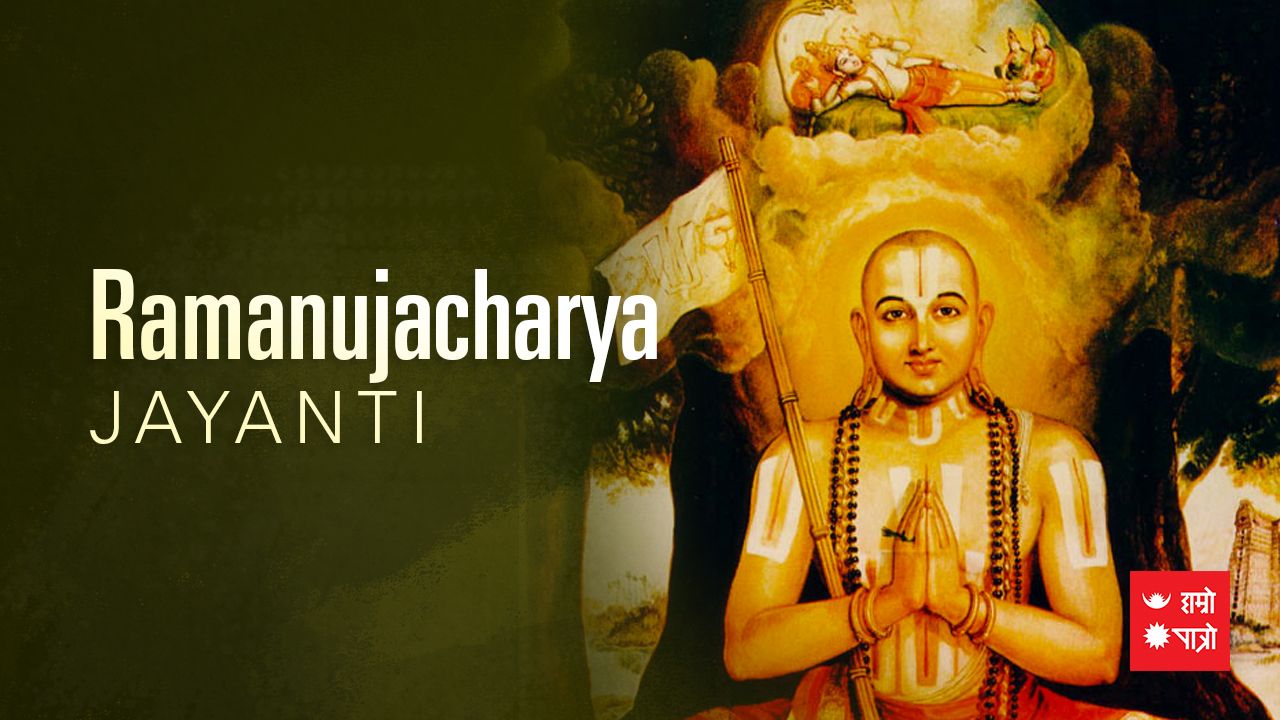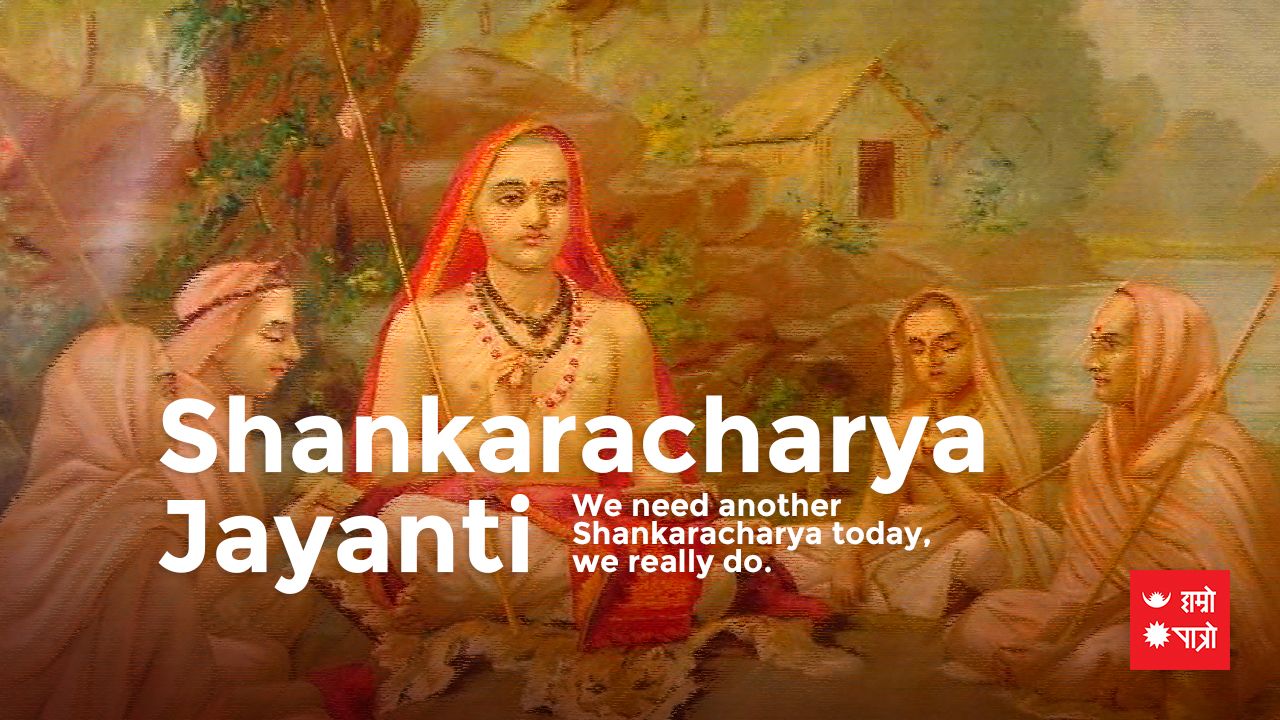
Ramanucharya Jayanti
Who is Ramanucharya?
The birth anniversary of Ramanucharya, a devotee of Vishnu, is celebrated on this date every year. Like Shankaracharya, Ramanucharya is an eternal philosopher, although Ramanucharya's philosophies are Vishnu-centric. He was born in 1017 AD in the ancient city of Madras. He came to Kancheepuram in pursuit of Veda's study; he studied Adwita Vedanta under teacher Yadav Prakash.
Let's honor this Guru, Ramanuja Acharya, on his birthday. He is a revered guru in the Bhakti-Marga lineage. He also initiated Bhakti poetry and the saints of Alvar poetry. His mantra was "Om Namo Narayana," and his utmost belief was in a monotheistic manifest where Lord Vishnu was the center.
Ramanucharya, a campaigner for the Bhakti campaign, is also considered a guide for Vaishnavism.
His contributions
He wrote his commentary on the Brahma Sutra, which is known as the Sri Bhasya. He was a profound scholar of the Sanskrit language, and he also crafted Srimad Bhagwat Geeta in the Sanskrit language. He traveled across the length and breadth of the Indian subcontinent to disseminate the path of wisdom and reformation. He is also known for his balanced verdict on the dispute between Vaisnavism and Saivism.
We need more Ramanujacharyas in this world; May Bhakti magnify across the globe.
Shankaracharya Jayanti: We need another Shankaracharya today, we do
Who is Shankaracharya ?
Jagatguru Adi Shankaracharya is a champion thinker and a charmer, an unchallenged king of Santana philosophy who appeared right on time when the entire world was sunk in a quagmire of superstitions and scriptural misinterpretations.Shankaracharya also represents the most riotous sardonicism in the universe of philosophy, he is turned hidden Buddhist by Vedantic, and Buddhist curse him for ending the wave of Buddhism in the Indian subcontinent and reestablish Vedas.
However, a single person who only lived till his mid-thirties was able to study Vedas, interpret them, reinterpret them, and travel across the Indian subcontinent organized debates and created a balance in society through delivering the knowledge of Vedas. His philosophical prowess satisfied the Vedic scholars and his sharp intellect and magical articulation defeated his philosophical rivalries. Layman was hugely pleased by his simple yet pious way of devotion, his bhajans mesmerized the crowds and the Sanatan Philosophy was reestablished with all its glory. I still can't figure out why some historians and writers blamed him as a hidden Buddhist, plausibly this could be because he redeemed falsely imposed worthless priests and ended the academic imperils of Sanatan manifest.
The contribution of Adi Guru Shankaracharya.
To understand the herculean contribution made by Jagatguru, we must go back to the 8th century CE, The religious and spiritual essence was rampant during that time, and rigid and exploitive ritualism was highly prevailing in society. Because of this rigid and exploitive ritualism, rejecting Vedas and accepting Buddhism was happening, villages and cities were transforming into anti-Sanatan ideas and the religious and spiritual transition was creating a huge wave of Buddhism into the Indian subcontinent. The essence of Sanatan philosophy, with its all-embracing message of love, compassion, and pervasiveness of humankind, was completely lost in the blind ritualistic performance.
Disliked by Buddhists.
On the other side, Buddhists curse him for ending the wave of expanding Buddhism, but that is nothing but a conspiracy. I belong to Nepal, which is the world's only Hindu capital (the former world's only Hindu Kingdom), but an exclusive spiritual land that holds a mesmerizing mixture of Hinduism and Buddhism. We have temples and idols where the same idols or statues are named after different gods of Hindu and Buddhist philosophies. Buddha is worshiped equally as other Hindu deities and gods. The ancient pond in Kathmandu valley is believed to have been cut by the Buddhist deity "Majushree," and people from both faiths worship him. An idol at Pashupati is worshiped as Manjushree by Buddhists; however, the same idol is worshipped as "Saraswoti" by Hindus. This harmony and integration were commenced and institutionalized by Jagatguru, who redefined Bhakti as a tool to achieve eternal oneness with the ultimate energy.
Shankaracharya started writing major commentaries on scriptural texts at the age of 12 and concluded his every commentary and redefinition by the age of 16, was a true son of God, an incarnation sent to reestablish and reconstruct the spiritual and religious essence of society. He expanded the narrow philosophies and drab systems of worship, established 4 ashrams in 4 corners of India, and institutionally placed his four disciples to propagate Advita through them. These Aashramsare the institutions that still institutionalize and safeguard Sanatan philosophies and construct researches and sastrathas. Let me say a million words, but still, they will not complete the article on the contribution of Jagat Guru. I must say that I am not bringing his birth, family, or village into today's context. Jagaturu must not be confined to all these minimal identifications; an incarnation of Lord Shiva only lived for 32 years and achieved all these.
Happy birth anniversary to Jagatguru, We need another Shankaracharya today.
-Suyog Dhakal
Liked by: